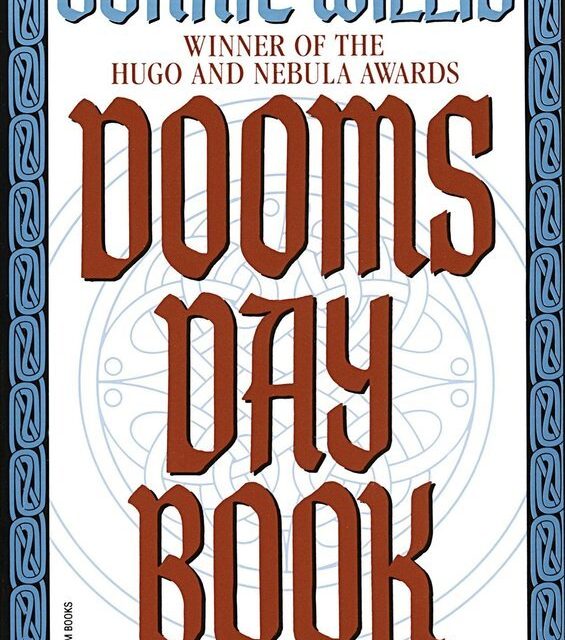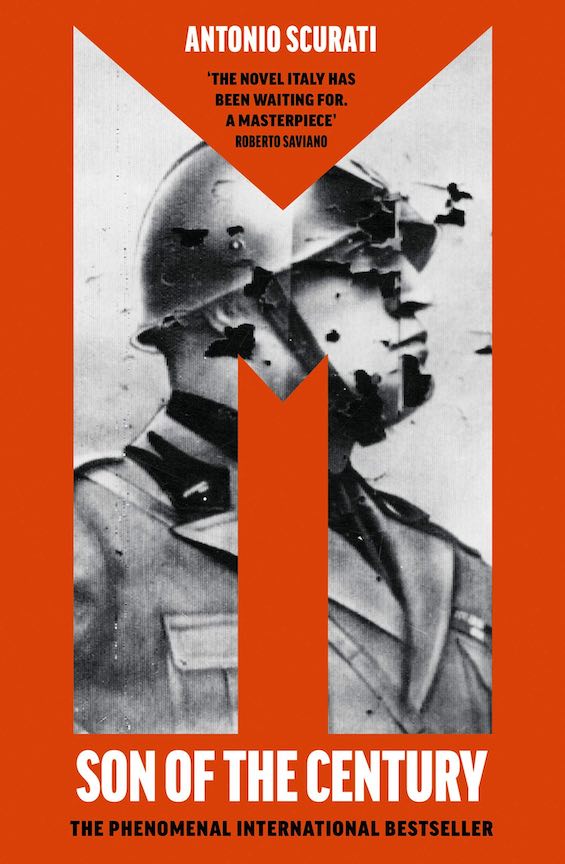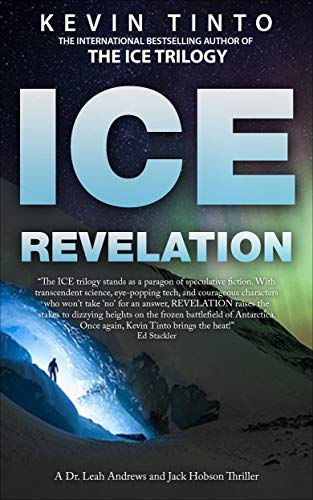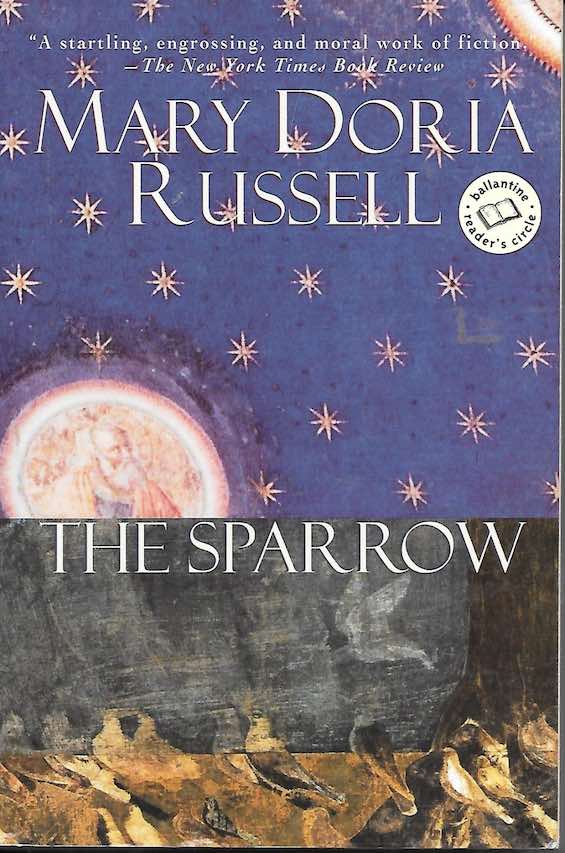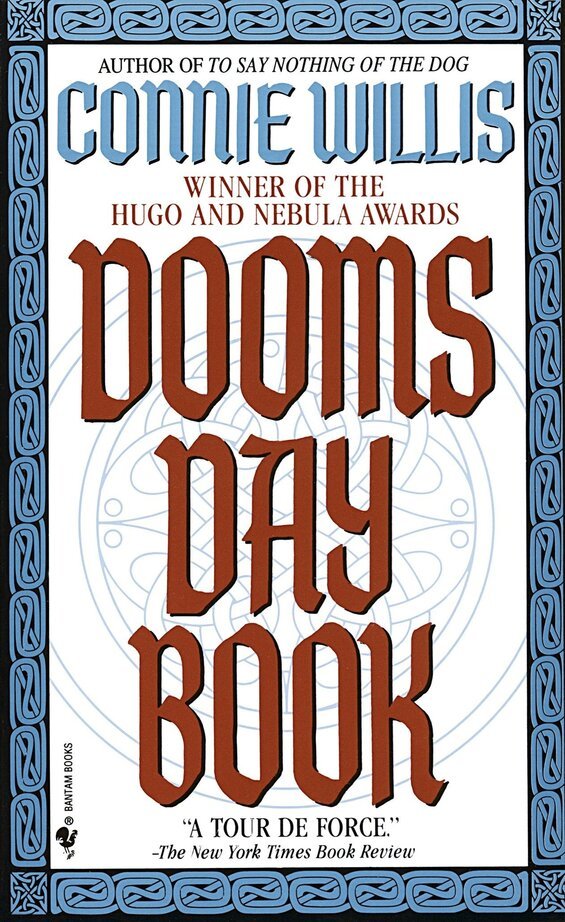
What do we know about the past, and how do we know it? Historians rely largely on the contemporaneous written records they call primary sources. But other disciplines make important contributions to history as well, including archaeology, physics, and genetics. Still, what they learn comes exclusively from what remains of the past. What if historians could learn first-hand by sending scholars into previous centuries to compare the historical record to the reality? Award-winning author Connie Willis explores that idea in her monumental 1992 science fiction tale, Doomsday Book, a novel about the Black Death.
Estimated reading time: 6 minutes
A journey to 14th-century England
Kivrin Engle is a bright and adventurous first-year student in medieval history at Oxford’s Brasenose College. In the mid-21st century, time travel is well established as a method for historians to study conditions over the past four or five hundred years, and Kivrin is eager to explore 14th-century England. Together with the acting head of medieval studies, Mr. Gilchrist, and her history tutor at Balliol College, Mr. Dunworthy, she develops a plan for a two-week visit in 1320, farther back than others have previously gone. Her target is the village of Skendgate, near the city of Bath in the country’s far southwest. Unfortunately for all concerned, everything goes wrong when Kivrin sets out for the past.
Doomsday Book (Oxford Time Travel #2 of 5) by Connie Willis (1992) 592 pages ★★★★★
Winner of the Hugo and Nebula Awards for Best Novel
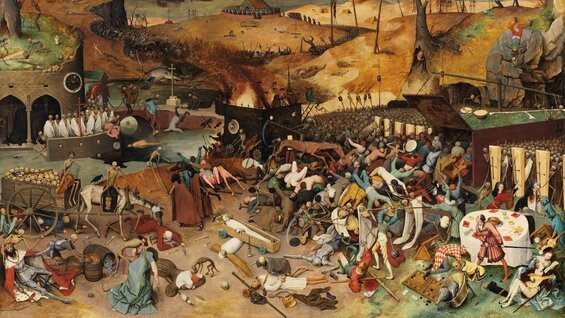
Everything’s gone wrong. Badly wrong.
Somehow, Kivrin has fallen violently ill with a flu-like disease. She arrives in the forest near Skendgate delirious with fever. Back in Oxford, a similar disease is spreading fast, filling up first the university infirmary and then all available rooms for the fast-growing number of patients as the epidemic spreads. The National Health Service quarantines the town, shutting it off from needed supplies. Meanwhile, Mr. Dunworthy’s concern that something might go wrong with Kivrin’s journey to the past turns to abject fear. The technician who managed the time machine’s controls is himself delirious, but he manages to convey to Dunworthy that something has gone badly wrong. And the tutor is certain he’s right. Mr. Gilchrist has proven himself to be ignorant of how time travel works. He has recklessly rushed Kivrin’s departure, ignoring the need for the numerous tests and checks that are routine before any historian may be sent to the past.
Willis follows Kivrin’s challenging experiences in the past in chapters that alternate with accounts of the epidemic in Oxford. The young woman has made her way to the home of a minor noble who holds the lands around Skendgate. But he has been detained in Bath as a witness in a trial. Kivrin is taken in by his mother, his wife, and their two young daughters.
The tale shifts from the 14th century to the 21st, and back again
Meanwhile, in 21st-century Oxford, Dunworthy frantically seeks to discover what’s gone awry. But distractions constantly intrude. His secretary repeatedly insists that he make decisions about inconsequential matters. A visiting American archaeologist demands his help in getting access to her dig at the ruins of Skendgate. A troupe of American bell-ringers is frantic about the cancellation of their Christmas concerts and the lack of rehearsal space. And the mother of one of his students is causing havoc and threatening legal action because she is convinced that her son’s health is delicate. (He is, in fact, exceedingly healthy, and seems to manage hooking up with almost every attractive young female in sight as he dodges his mother.) Dunworthy’s only support comes from Dr. Mary Ahrens, the physician in charge of the infirmary, and her twelve-year-old great-nephew, who proves to be as resourceful as any student at the college.
An exciting tale, well told
We know, of course, that Kivrin has actually been transported not to 1320 but to 1348, the year the plague came to England. (We know that because this award-winning novel is so widely discussed as a story about the Black Death.) But neither Kivrin nor Dunworthy is aware of that at first. In fact, throughout most of the action, both believe that she is, in fact, in 1320. Kivrin learns the truth essentially by accident. Dunworthy finds out only when the delirious technician’s health improves enough to explain to him exactly what went wrong. And from that point on, the story becomes a frantic effort by Kivrin to nurse the people around her in Skendgate as they die of the plague and by Dunworthy to arrange his own mission to the past to rescue Kivrin. It’s an exciting tale, well told.
About the author
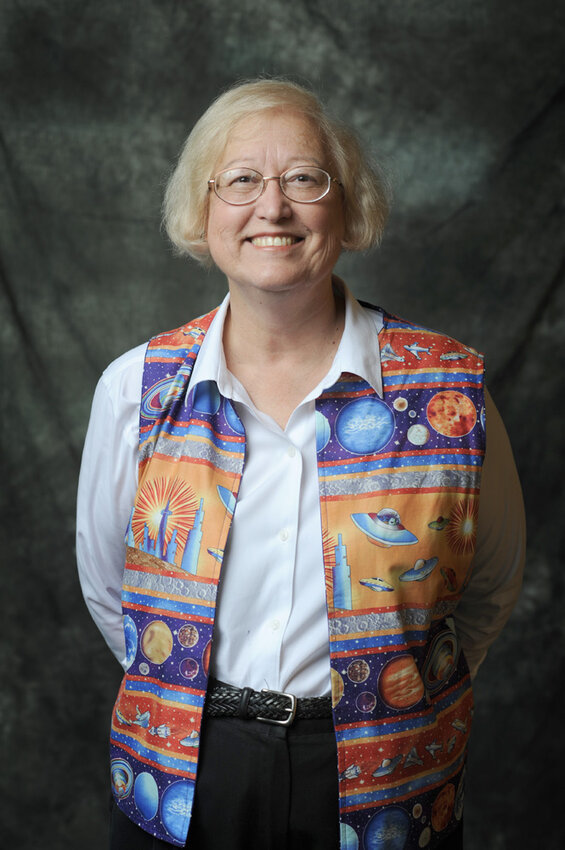
Connie Willis (1945-) is one of the most honored authors in science fiction. She has won eleven Hugo Awards and seven Nebula Awards for individual works—more major SF awards than any other writer. Doomsday Book is one of just twenty-five novels that have won both the Hugo and Nebula since the year the latter was first granted in 1966. Others include such classics as Dune, The Left Hand of Darkness, Ringworld, Rendezvous With Rama, and The Forever War. And Connie Willis is one of only five authors who have won both awards for a single novel. (The others are Ursula K. Le Guin, Arthur C. Clarke, Orson Scott Card, and Joe Haldeman.) Willis has written scores of sci-fi novels, novellas, and short stories. She was born in Denver and now lives in nearby Greeley, Colorado, with her husband Courtney Willis, a former professor of physics at the University of Northern Colorado. They have one daughter, Cordelia.
For related reading
I’ve also reviewed The Road to Roswell by Connie Willis (An award-winner’s comic alien abduction story).
For another, much less successful, novel about time travel to the mid-14th century, see Timeline by Michael Crichton (Nonstop action in this time travel thriller).
I’ve reviewed another of the Oxford historians’ saga: Blackout – Oxford Time Travel #4 of 5 (Historians study World War II in person).
This is one of 10 great medical and biological thrillers.
For another novel based on the same conceit (but much less well executed), see Just One Damned Thing After Another (Chronicles of St. Mary’s #1) by Jodi Taylor (Historians blunder about in the past in this time travel story).
For more good reading, check out:
- The ultimate guide to the all-time best science fiction novels
- Great sci-fi novels reviewed: my top 10 (plus 100 runners-up)
- The five best First Contact novels
- Seven new science fiction authors worth reading
- The top 10 dystopian novels reviewed here
And you can always find my most popular reviews, and the most recent ones, on the Home Page.

